The Featured Creatures collection provides in-depth profiles of insects, nematodes, arachnids and other organisms relevant to Florida. These profiles are intended for the use of interested laypersons with some knowledge of biology as well as academic audiences.
Introduction
The dingy purplewing butterfly, Eunica monima (Stoll), is a small, tropical species. Females are drably colored, but males have a purple sheen and are quite attractive (Figure 1).
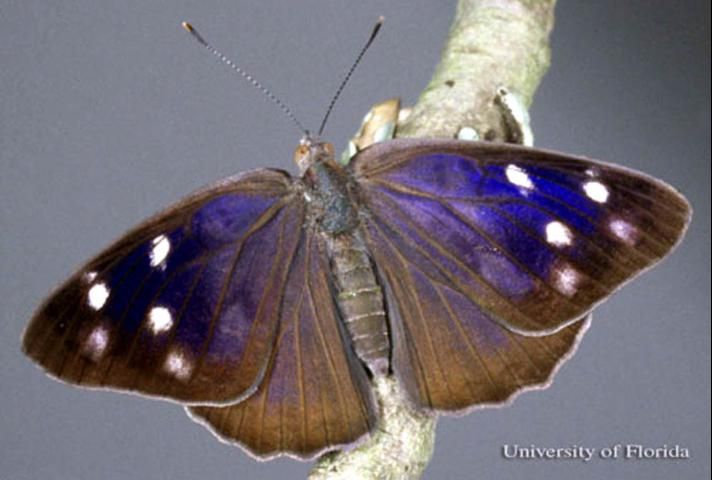
Credit: Donald W. Hall, UF/IFAS
Distribution
This species is found in the West Indies and Mexico through Central America and northern South America south to Venezuela. In the US, it is a migrant to southern Texas (Scott 1986) and southern Arizona, and there are small resident populations in protected subtropical hammocks in southern Miami-Dade County, Florida (particularly Deering Estate in Miami and Castellow Hammock in Homestead [Cech and Tudor 2005]).
Description
Adults
Dingy purplewing adults have a wingspread of approximately two inches. The upper side of the forewings of females is brownish-black while in males there is a broad brown border with purple interior (varying from a slight purple sheen in some specimens to bright purple in others). Forewings of both sexes have six white spots on the distal half of the upper forewings - blurry in females but brighter in males. The undersides of the wings of females are gray-brown making them cryptic while the butterflies are resting on tree trunks. The undersides of the wings of males are faint purple with light tan areas, a couple of narrow wavy brown bands, and a row of three post-median eye-spots on the hind wing (Figure 2). The anterior-most eye-spot has a double pupil and with blue centers. The posterior spots have brown pupils. The upper surface of the wings of males is highly UV reflective—probably for mate recognition (Scott 1986).
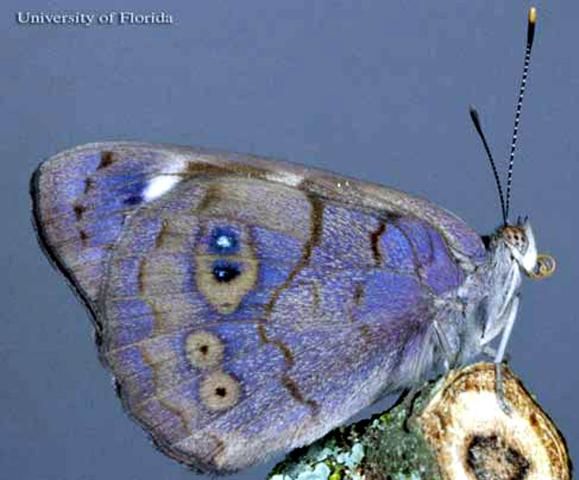
Credit: Donald W. Hall, UF/IFAS
Eggs
The sculptured, barrel-shaped eggs are pale green.
Larvae
Full-grown caterpillars are approximately one inch in length. The head is orange-brown with the lower part of the face bluish-black. The body is greenish-orange with a narrow yellow lateral stripe and widely-spaced tiny black spines. There is a row of small, bluish-black spines on the sides, a larger pair of spines on the back near the posterior end of the body, and a small bluish black patch on top of the prothorax and above the anus (Figure 3). The caterpillars are probably variable in coloration throughout their range. The appearance of caterpillars we have reared differs considerably from the description provided by Scott (1986).
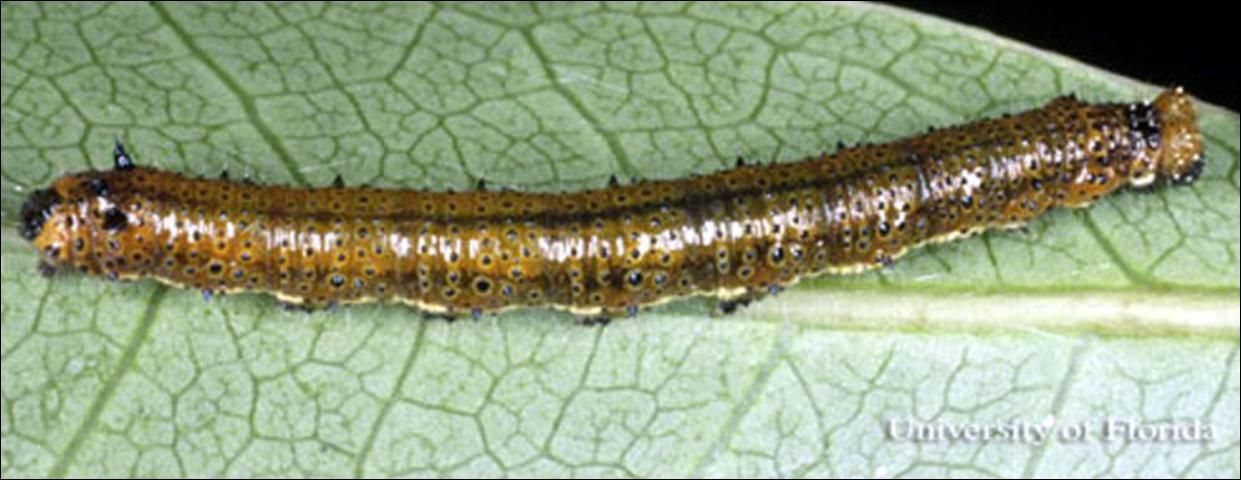
Credit: Donald W. Hall, UF/IFAS
Pupae
The pupae are cryptic and green or gray depending on the color of the pupation substrate. They are attached to a silk pad by a cremaster, but unlike pupae of most other nymphalids which hang downward from the substrate, pupae of the dingy purplewing project outward at a 90-degree angle from the substrate (Figures 4 and 5).
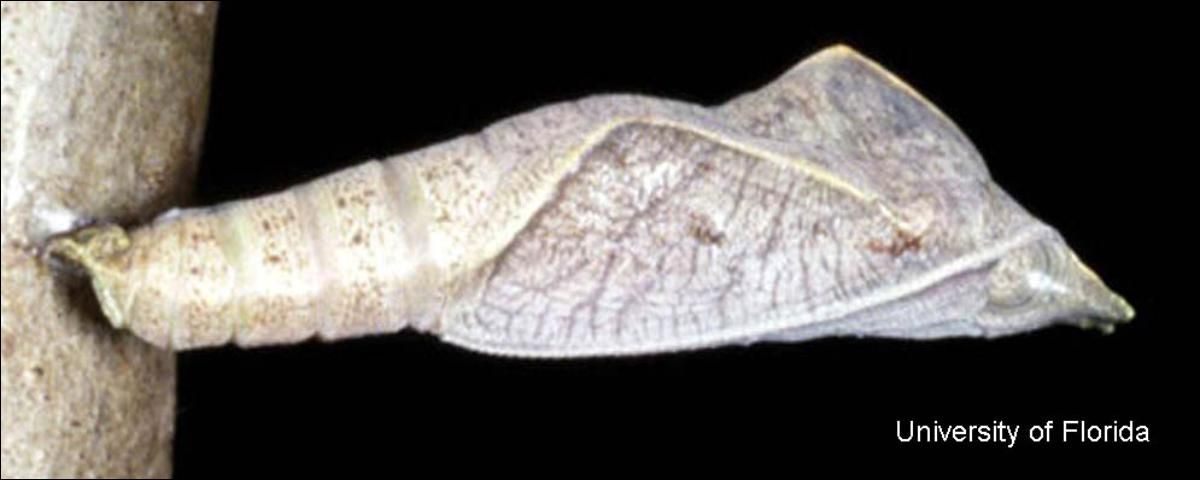
Credit: Marc C. Minno, Suwannee River Water Management District
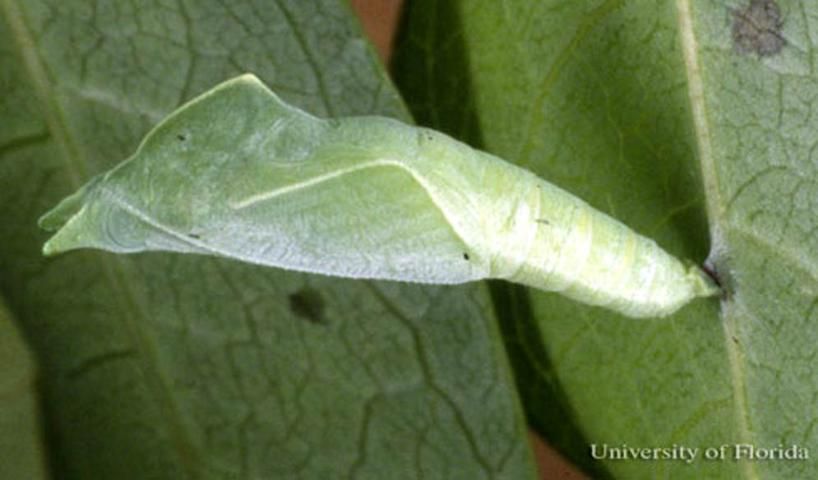
Credit: Jerry F. Butler, UF/IFAS
Life Cycle and Biology
Eggs are laid in clusters on the underside of the host leaves (Figure 6). There are three or more generations each year in Florida, and caterpillars may be found throughout the year.
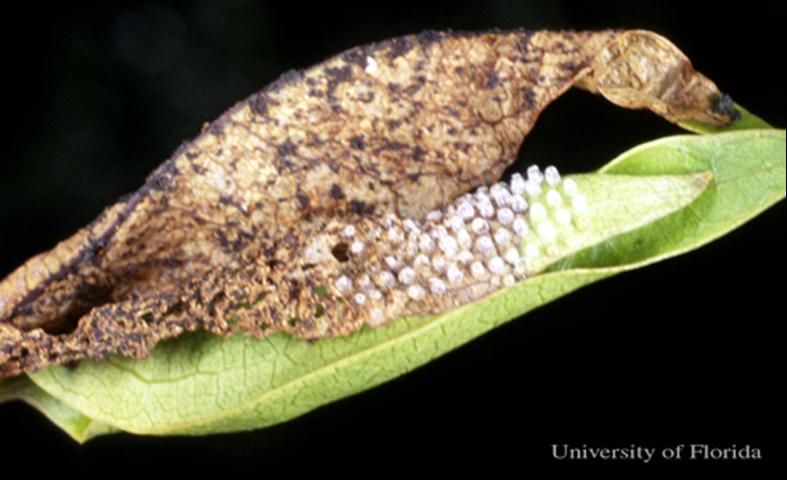
Credit: Jerry F. Butler, UF/IFAS
Host Plant
In Florida, the caterpillar host is the gumbo-limbo tree, Bursera simaruba (L.) Sarg. (Burseraceae) (Figure 7). The caterpillars eat young leaves and live in a messy nest of silk and frass (Minno et al. 2005).
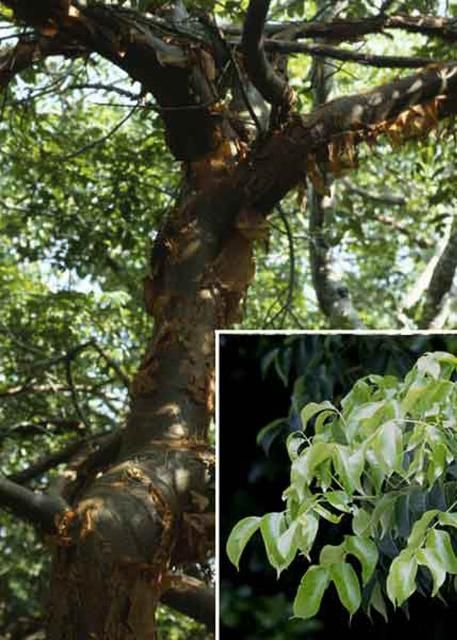
Credit: Marc C. Minno, Suwannee River Water Management District
Adult dingy purplewings feed on tree sap, dung, fruit, and mud, but seldom feed on flower nectar (Scott 1986). They often rest on tree trunks where they are cryptic and also spend a considerable amount of time in the tree canopy.
Selected References
Cech R, Tudor G. 2005. Butterflies of the East Coast. Princeton University Press. Princeton, New Jersey. 345 pp.
Minno MC, Butler JF, Hall DW. 2005. Florida Butterfly Caterpillars and their Host Plants. University Press of Florida. Gainesville, Florida. 341 pp.
Scott JA. 1986. The Butterflies of North America: A Natural History and Field Guide. Stanford University Press. Stanford, California. 583 pp.